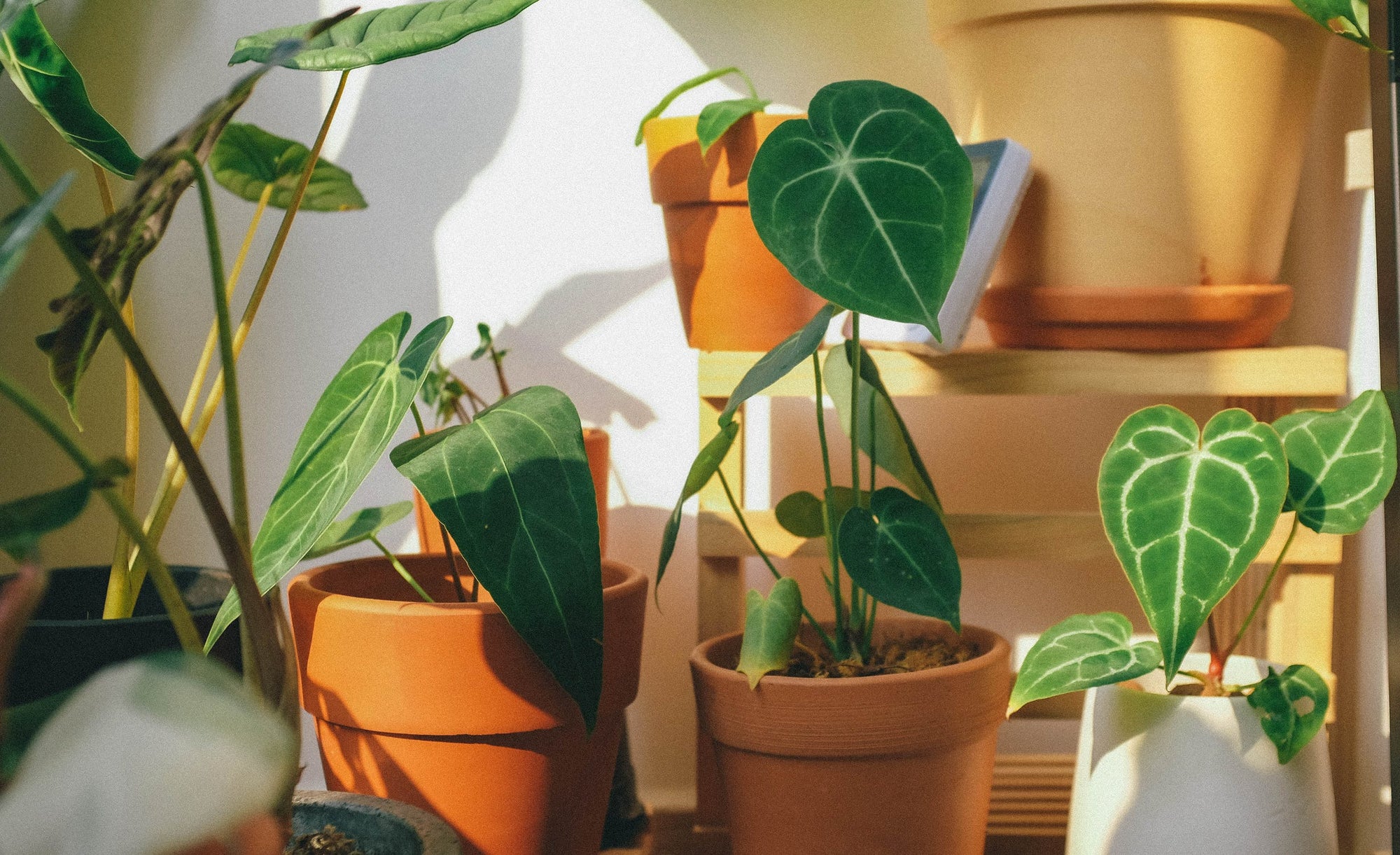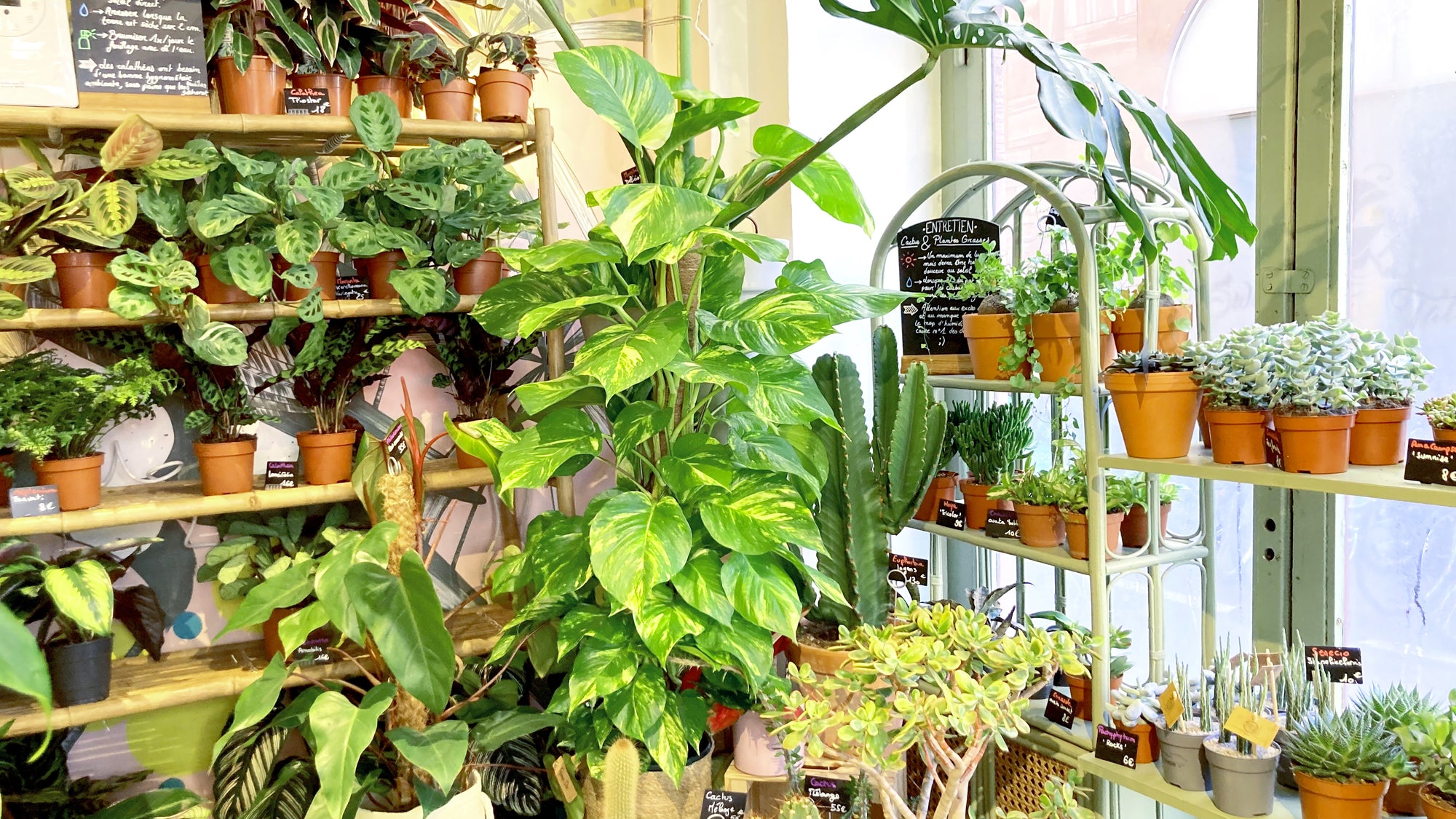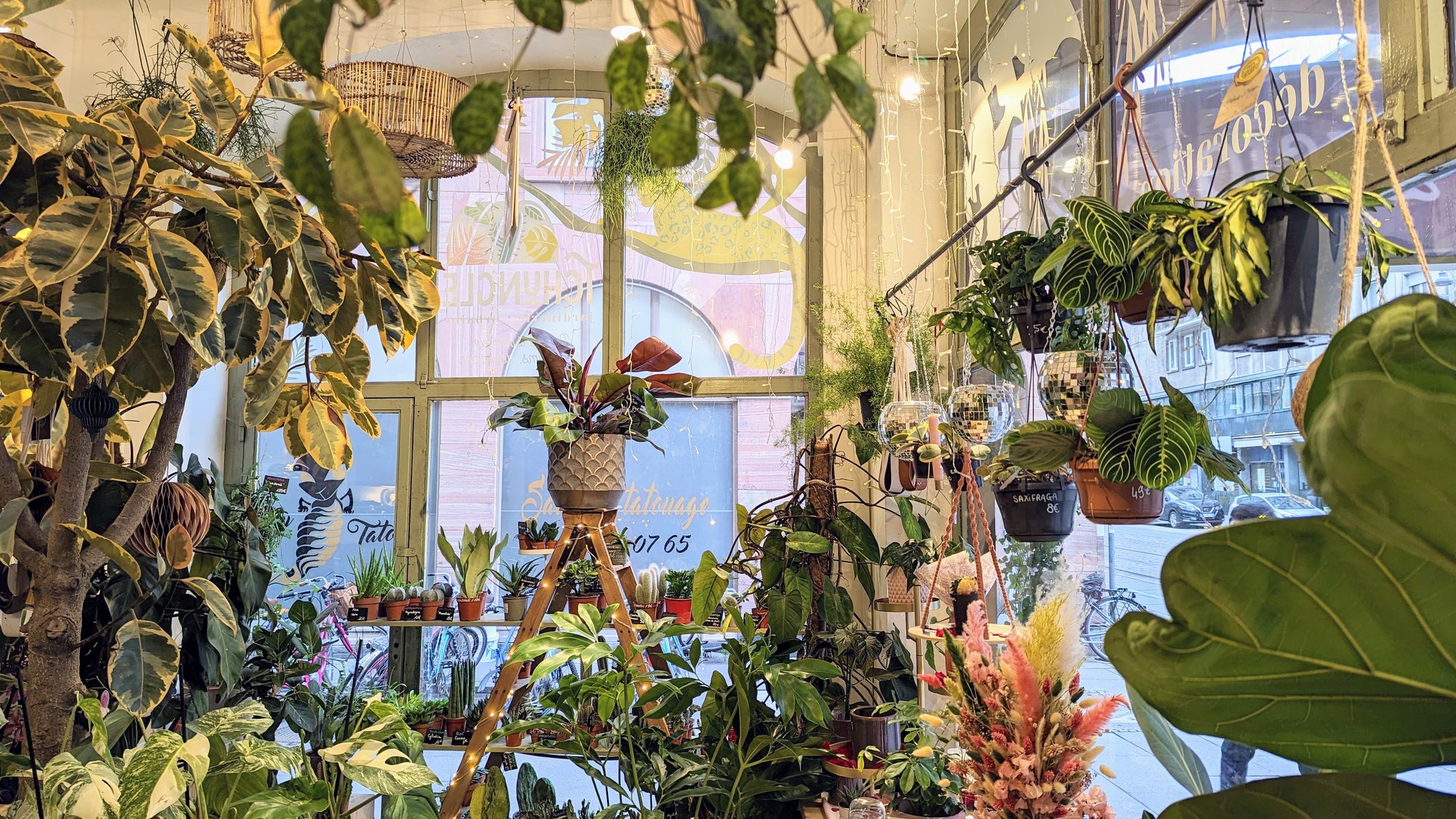Light is a key element in choosing an indoor plant. As many of you come to see us every day telling us that you have trouble finding your way around all these notions, we have decided to concoct a little article to enlighten you!
In the choice of a plant, it is important to know the conditions in which it will evolve and this with simple questions:
What are the needs of the plant?
We always advise to refer to the biotope of a plant, for example we find more often a fern in an undergrowth, ferns will therefore need less light than a cactus which we find rather in a desert environment and so very bright. The large families of plants will generally have the same needs in terms of brightness, try to find out in the store about the family of the plant you want to acquire. If she ever has needs that are a little different from her original family, we'll let you know.
It can also be nice to try when possible to find photos of the plant in its natural environment, is it found rather in the depths of the canopy, or does it seem rather evolve in a desert environment? These are all clues that can guide you.
What is my exposure?
The exposure of the room plays a big role! It has been shown that a room to the north receives 5 to 10 times less light than a southern exposure. In the same way a room in the East will have the morning sun which is much softer than a Western exposure. As it is advisable to avoid exposing tropical plants to direct light when the sun is at its hottest (especially in spring and summer). You will have to be vigilant on the windowsill locations if you are exposed to the south or the west; if they are too exposed in direct light, they will have to be fitted with a veil or you can reserve them for cacti and succulents, they love it!
Lighting is measured in lux and in its natural environment, a plant will be able to reach 70/80,000 Lux without shade and around 10,000 in more shaded areas. 10,000 lux is precisely the illumination that we will obtain close to a window to the south, which is the brightest exposure. Which means that in most cases, we will start with a slight deficit of light.

Where do I want to place my plant?
In addition to having to avoid direct sunlight, there are other factors to consider. It is essential not only to judge the luminosity thanks to our eye. Indeed, it is not because a room seems bright that we will be able to install the plant anywhere. In a classic interior (in the northern half of France), the vast majority of plants will have an ideal location which is at a distance below 2 meters from the window. And if the room is really too dim, it would be better to stay in an even closer area. If certain varieties such as Philodendron , Pothos or even ferns can adapt to low light, this is far from being the norm.
Several rules are involved in determining the correct location for a plant:
- The light decreases with the square of the distance , so a plant that has been moved 2 meters away from the window will receive 4 times less (2x2=4) useful light for its development than a plant that has been installed behind the window. So the further you go, the more you have to be sure that the plant is suitable;
- The light enters in a straight line , and does not bend, so be careful at angles away from the window.
To put it simply, the less light the room has, the less you will be able to move away from your windows if you want optimal maintenance.
If you are ever sorely lacking in light or if you want to move further away from incoming light, there are solutions. To correct light deficiencies you can turn to horticultural lighting, most spotlights are now compatible with an E27 base, which represents a large majority of lamps. In this case, it will be necessary to choose a system adapted to the cultivation of the plants to have an adequate light spectrum. At present, horticultural LEDs are an interesting solution both economically and in terms of performance.
There is no universal rule and each room will have its specificity, and the rule can change depending on where you are going to be in France. If you have had a plant for many years in a location that deviates a little from the theory and it seems to like it, there is no need to change everything. And if you suffer from a very slight lack of light, but without the possibility of finding a brighter location, it can be interesting to rotate the plants regularly, so that all sides can benefit from the light. For example, you can think about it every time you water!
To summarize beyond 1m/1m50 we will favor so-called "shade" plants such as those which are part of the Marantaceae family (eg Calathéa, Maranta, Ctenanthe), Ferns, Epipremnum (Pothos) or again the spathiphyllum. But also certain plants which normally require good light but which resist very well such as Zamioculcas, Sansevieria, Dracaena or even most Philodendron.
Biotope* : Living environment
Photo by Huy Phan




Comments
Bonjour Natacha !
J’hésitais à parler des lux justement, mais comme le premier commentaire en fait mention, j’ai rajouté une petite partie là dessus. Malheureusement les applications de téléphone sont assez imprécises :/ Il est quasiment impossible de savoir avec précision quels sont les besoins précis de chaque plante en termes de lux. Il faut partir du principe que même derrière la fenêtre plein sud et sans vis à vis on part déjà avec un petit déficit par rapport au milieu naturel. Donc il faut chercher le maximum d’infos sur la plante et sa famille.
Idéalement entre 1m et 2m on ne va placer que les plantes d’ombre, il est possible de se procurer la liste des plantes d’ombres sur internet (Comme souvent sur internet, il va falloir recouper les informations :/ )
Hello!
Déjà, c’est cool de démarrer ce blog!
J’en profite donc pour poser une question qui me travaille un peu depuis quelques temps au sujet de la luminosité ! Au cas où vous auriez des pistes… ;)
J’ai téléchargé une appli luxmètre sur mon téléphone, mais je ne sais pas si c’est très précis… et surtout je me demandais, que ce soit pour une exposition en lumière naturelle ou sous lampe horticole, existe-t-il des données qui indiquent quelle quantité de lumière est nécessaire pour chaque plante? J’ai cherché un peu mais c’est difficile de trouver ce genre d’infos…
À bientôt !